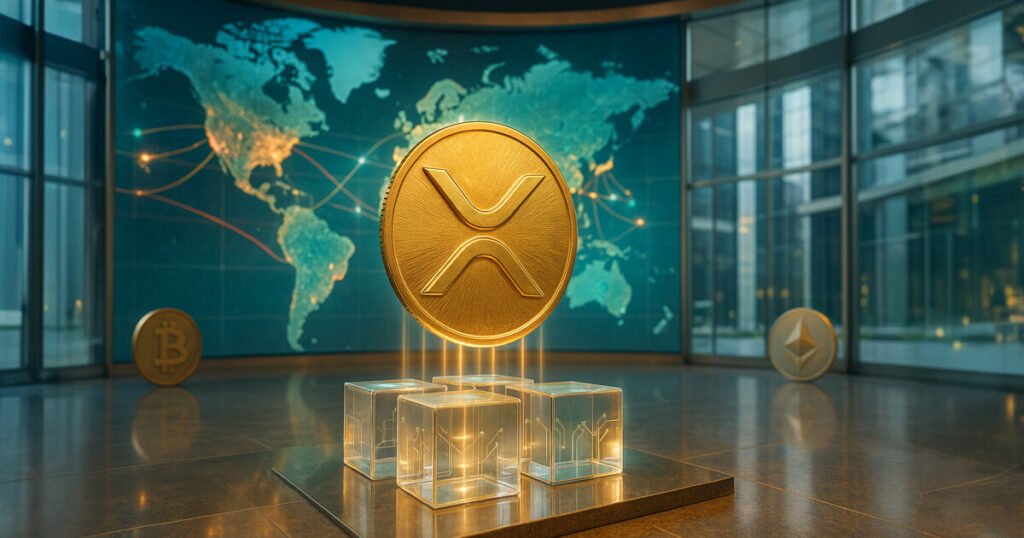XRP’s Legal Battle and Resurgence: A New Era for the Crypto Asset
For nearly five years, XRP found itself entangled in a complex legal situation that stifled its growth and market performance. The U.S. Securities and Exchange Commission (SEC) had launched allegations against Ripple Labs, claiming the company sold unregistered securities. This drawn-out legal battle saw XRP’s price stagnate while other cryptocurrencies, like Bitcoin and Ethereum, surged ahead. As XRP languished, interest from exchanges waned, and institutional funds pulled back. However, recent developments offer a glimmer of hope for XRP and its supporters.
In August 2025, the regulatory cloud shadowing XRP lifted when the SEC dropped its claims against Ripple Labs. This pivotal moment marked the end of one of crypto’s longest legal disputes, enabling XRP to trade freely in U.S. markets for the first time since 2020. As this regulatory clarity emerged, XRP started retaking its place in institutional discussions, paving the way for renewed interest and investment.
Resurgent Market Activity
Post-settlement, XRP has experienced a dramatic shift in its market dynamics. The reduction in compliance risks has coaxed liquidity providers back into the ecosystem. According to Coinglass data, the asset’s average daily trading volume has skyrocketed from under $1 billion to over $10 billion. Notably, liquidity peaked to an impressive $74 billion after Donald Trump’s election victory in 2024. Open interest across derivatives platforms has also surged over 1,000% year-over-year, while XRP’s spot price soared by 443% in the same period, significantly outpacing competitors like Solana and Cardano. XRP now ranks among the top ten altcoins by market capitalization, signaling a renewed momentum driven by institutional interest.
Institutional Investment Opportunities
This institutional momentum is further exemplified by Evernorth, a digital-asset treasury company focused on XRP, announcing plans to go public via a SPAC merger. This transition aims to raise over $1 billion, with significant commitments from SBI Holdings and other notable investors. Evernorth is set to operate as a corporate treasury vehicle designed for purchasing XRP directly from open markets, seeding liquidity pools, and launching institutional yield programs. If successful, its listing under the ticker XRPN could become the first public vehicle offering regulated exposure to XRP, allowing institutional funds, pensions, and ETFs to gain access to this re-emerging asset.
Crypto researcher Ripple Bull Winkle anticipates that a publicly listed company accumulating XRP on the open market will generate substantial demand. Unlike previous methods of acquisition that often applied discounts or OTC deals, purchases at market rate reinforce genuine market pressure, thus tightening the available supply.
ETF Prospects on the Horizon
In parallel with developments at Evernorth, the narrative surrounding XRP’s Exchange-Traded Fund (ETF) approval has intensified. Several well-known asset managers have submitted applications for approval to create XRPs ETFs. Although an ongoing U.S. government shutdown could postpone the approval process, these proposals remain active due to amended filings. Experts believe there is a strong likelihood of approval, which could result in inflows ranging from $5 to $8 billion within the first year of launch. Such approvals would propel XRP ETFs into the upper tier of digital-asset funds by assets under management, cementing XRP’s status as a legitimate asset class.
This potential approval will further formalize XRP’s reputation, completing a cycle similar to Bitcoin ETFs, which were approved earlier. As institutional interest solidifies, XRP’s transition from a payments token to a recognized investment asset is well underway.
Building the Future: Ripple’s Strategic Acquisitions
Beyond speculative trading flows, Ripple itself has allocated approximately $3 billion over the past two years to acquire various firms to enhance its payment and custody infrastructure. Key acquisitions include Metaco, Hidden Road, Rail, and GTreasury, which displayRipple’s commitment to integrating custody and liquidity management under one compliant framework. The company is also in the process of obtaining a national bank charter in the U.S. while expanding licensing in over 60 jurisdictions.
Ripple’s efforts are designed to embed XRP within mainstream financial systems, and its Ripple Payments network now connects banks and fintechs across Europe, the Gulf, and Africa. As the XRP Ledger continues to flourish, with payment transactions increasing by over 430% in two years, the outlook for XRP appears more optimistic than ever.
Conclusion: The Future of XRP
Ripple CEO Brad Garlinghouse acknowledges that the past few years have underscored the primary utility of cryptocurrencies in payment systems. As payments remain a crucial area for blockchain technology, Ripple is poised to leverage this potential. Given the technological advancements and regulatory clarity now surrounding XRP, the asset is set to reclaim its position as an essential player in the crypto landscape—propelling forward as both a robust investment and a pivotal tool for global financial processes.
In summary, the future of XRP looks bright, as regulatory hurdles have lessened, institutional investments have surged, and strategic initiatives have positioned Ripple for broader success. As the digital asset continues to mature, it is likely to see heightened adoption and recognition within the global financial ecosystem.


